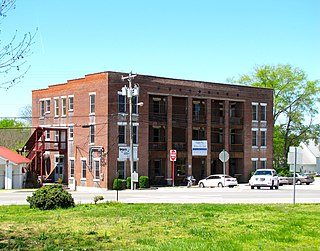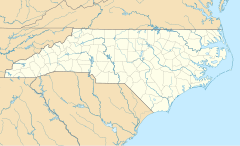
The Stanley Hotel is a 140-room Colonial Revival hotel in Estes Park, Colorado, United States, about five miles from the entrance to Rocky Mountain National Park. It was built by Freelan Oscar Stanley, co-founder of the Stanley Motor Carriage Company, and opened on July 4, 1909, as a resort for upper-class Easterners and a health retreat for sufferers of pulmonary tuberculosis. The hotel and its surrounding structures are listed on the National Register of Historic Places. Today, the hotel includes a restaurant, spa, and bed-and-breakfast; with panoramic views of Lake Estes, the Rockies, and Longs Peak.

The Plaza Hotel is a luxury hotel and condominium apartment building in Midtown Manhattan in New York City. It is located on the western side of Grand Army Plaza, after which it is named, just west of Fifth Avenue, and is between 58th Street and Central Park South, at the southeastern corner of Central Park. Its primary address is 768 Fifth Avenue, though the residential entrance is One Central Park South. Since 2018, the hotel has been the owned by the Qatari firm Katara Hospitality.

The Goodwood Park Hotel is a heritage hotel in Singapore, situated in a 6-hectare landscaped garden on Scotts Road. It was first built as the club house for the Teutonic Club serving the expatriate German community in Singapore, and later converted into a hotel.

The JW Marriott Essex House is a luxury hotel at 160 Central Park South in Midtown Manhattan, New York City, at the southern border of Central Park. Opened in 1931, the hotel is 44 stories tall and contains 426 Art Deco–style rooms and 101 suites, as well as 147 condominium residences. It features a distinctive red neon rooftop sign.

The historic Bullock Hotel is located at the corner of Wall Street and Main Street in Deadwood, South Dakota. It was built by Seth Bullock, an early sheriff of Deadwood, and his business partner Sol Star, in around 1895 at a cost of $40,000 and is the oldest hotel in Deadwood, boasting a casino, restaurant, and 28 of its original 63 rooms.

Baker City Tower or Baker Tower is the tallest building east of the Cascade Range in the U.S. state of Oregon, located in Baker City. It was constructed in 1929 in the Art Deco style and is nine stories high. It is part of the Baker Historic District and listed in the National Register of Historic Places. It was designed by the Portland office of architectural firm Tourtellotte & Hummel. The general contractor was John Almeter of Portland and the roofing contractor was Cook & Emele of Baker City.

Hot Lake Hotel is a historic Colonial Revival hotel originally built in 1864 in Hot Lake, Union County, Oregon, United States. The hotel received its namesake from the thermal spring lakes on the property, and operated as a luxury resort and sanitorium during the turn of the century, advertising the medicinal attributes of the mineral water and drawing visitors worldwide. It is also the first known commercial building in the world to utilize geothermal energy as its primary heat source.

Franklin Castle is a Victorian stone house, built in the American Queen Anne style, located at 4308 Franklin Boulevard in Cleveland's Ohio City neighborhood. The building has four stories and more than twenty rooms and eighty windows. In the late nineteenth century, when it was built, Franklin Boulevard was one of the most prestigious residential avenues in Cleveland. It is reported to be the most haunted house in Ohio.

The Skirvin Hotel is a 225-room hotel located in downtown Oklahoma City and the city's oldest hotel. Comprising three towers of 13 floors in an Art Deco architectural style, it is listed on the National Register of Historic Places.

The Hollywood Roosevelt Hotel is a historic hotel located at 7000 Hollywood Boulevard in the Hollywood district of Los Angeles, California. It opened on May 15, 1927, and is the oldest continually operating hotel in Los Angeles.

The Hamilton Hotel is a AAA 4-diamond hotel in downtown Washington, D.C., United States, located at 1001 14th Street, N.W., just to the north of Franklin Square. It is a member of Historic Hotels of America, the official program of the National Trust for Historic Preservation.

The Cavalier Hotel is a historic hotel building at 4200 Atlantic Avenue in Virginia Beach, Virginia. The seven-story building was designed by Neff and Thompson with a Y-shaped floor plan and was completed in 1927. Most of its hotel rooms featured views of the Atlantic Ocean, and all had private bathrooms. The hotel also featured dining facilities and opportunities for shopping, as well as amenities such as swimming pools that are now common features of modern hotels.

The Read House Hotel is a historic hotel in Chattanooga, Tennessee, founded in 1872. The 141-room main building dates to 1926, and is listed on the National Register of Historic Places for Hamilton County. The 100-room rear wing was added in 1962, originally as a motel.

The Walking Horse Hotel is a hotel on the National Register of Historic Places. It is located in downtown Wartrace, Tennessee, and is a part of the Wartrace Historic District. The hotel is in business as such, and also contains the Strolling Jim Restaurant, named for the original owner's World Grand Championship-winning show horse.
The Boar's Head Resort, formerly known as the Boar's Head Inn, is a hotel and resort usually described as being in Charlottesville, Virginia but in fact located in Albemarle County, Virginia just outside the city. The resort is situated on 573 acres (0.895 sq mi) and includes a golf course, 26 tennis courts, and a spa and fitness center.
The Morris Inn at Notre Dame is a Gothic Revival-style hotel owned by the University of Notre Dame and located on the school's campus in Notre Dame, Indiana.

La Posada de Santa Fe, formerly known as La Posada Inn, is a hotel in Santa Fe, New Mexico, that dates back to a mansion built in 1882.

The Omni Berkshire Place hotel is located at 21 East 52nd Street, near Madison Avenue, in Midtown Manhattan in New York City. It is owned and operated by Omni Hotels & Resorts. The hotel was also inducted into Historic Hotels of America, the official program of the National Trust for Historic Preservation, in 2010.

The Mutiny Hotel or The Mutiny Hotel on the Bay in Coconut Grove is a luxury hotel and resort located at Biscayne Bay on the Eastern Seaboard southwest of the Downtown Miami Historic District and Miami Beach Architectural District.
The 1929 Davidson Wildcats football team was an American football team that represented Davidson College as an independent during the 1929 college football season. In their seventh year under head coach William L. Younger, the team compiled a 5–5 record.


















